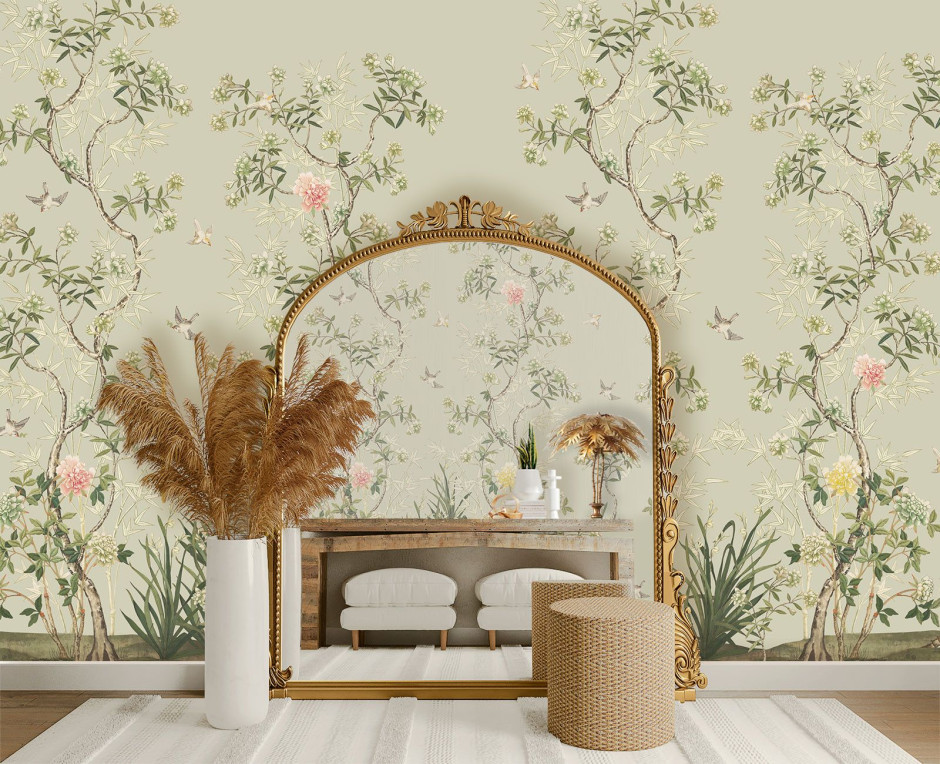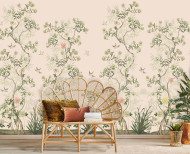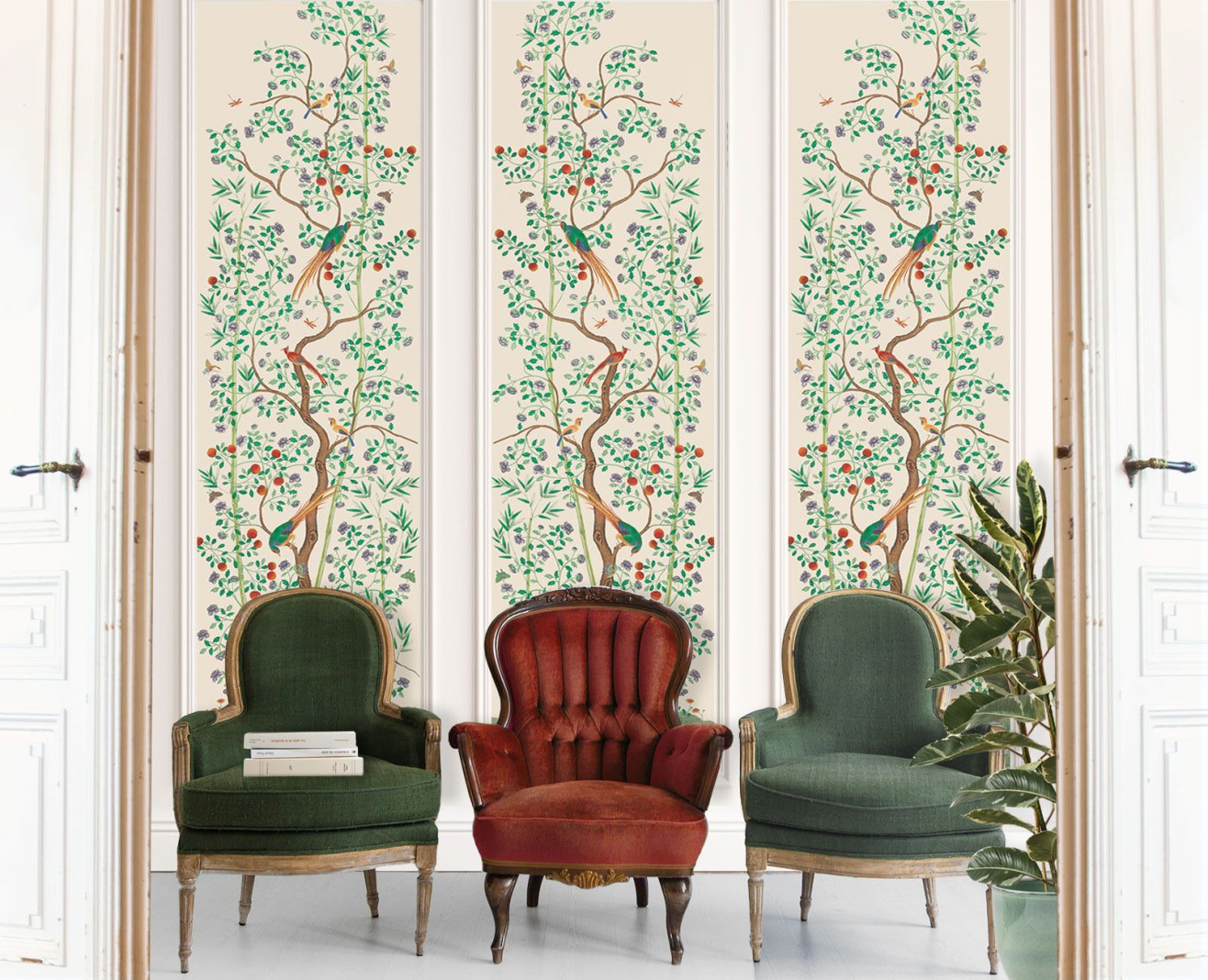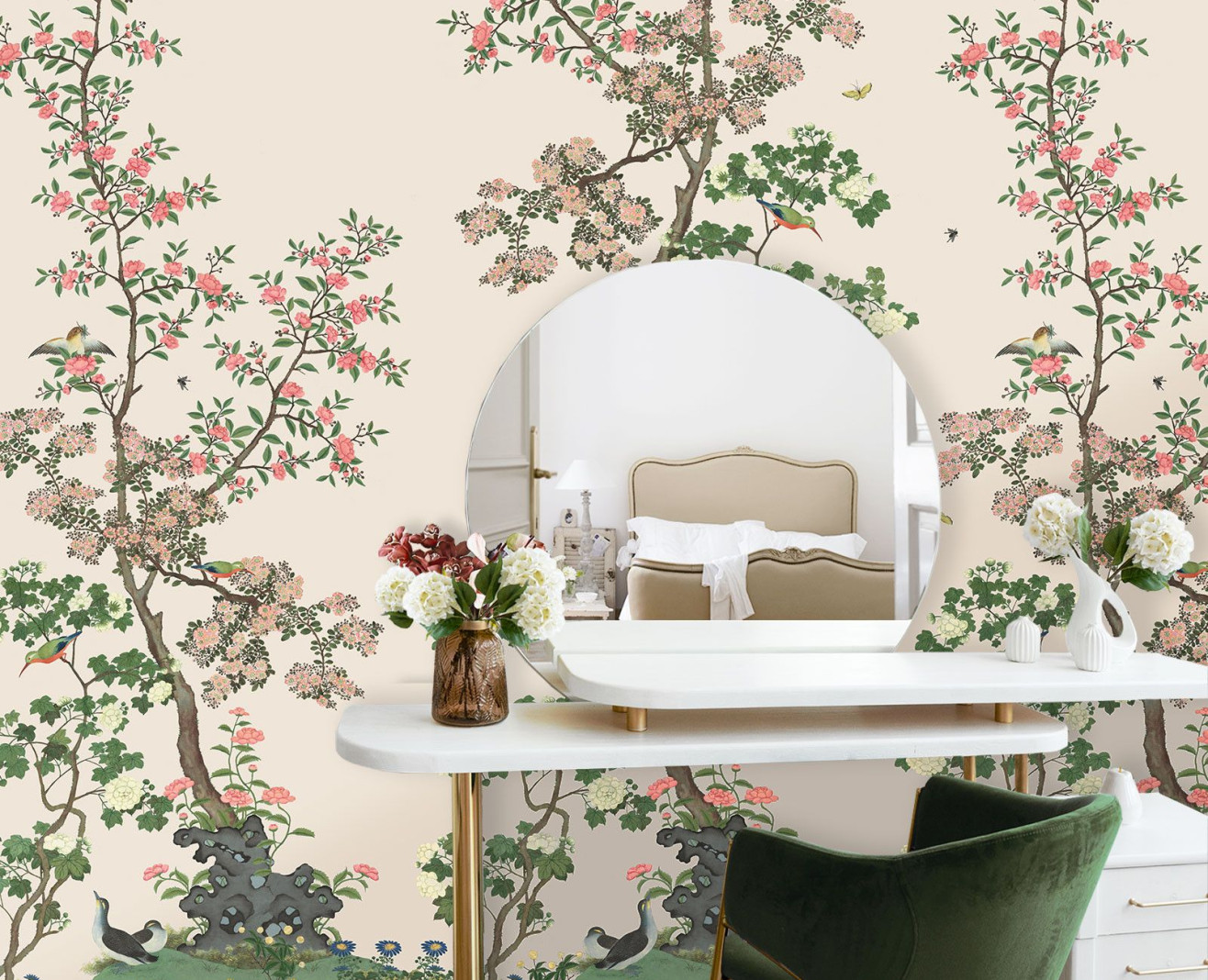No products
- LA PREMIUM finish ideal for walls, kitchen and bathroom
- L’EXTRA finish ideal for woodwork
You still have to place an order for additional boards
(boards are only sold by 3)
Chinese wallpaper Magnolia celadon green . 1775-1799
Unknown workshop
115,00 €
This design is inspired by a Chinese wallpaper dated from the years 1775-1799 and kept in the Wallcoverings department of the Cooper Hewitt Museum in New York. The original design was painted by hand on a paper made also manually. Its background was initially pale green. It takes up the iconography specific to Chinese papers of the 18th century with its flowers, birds and branches.
To bring this wallpaper back to life and modernity, we carried out a long and meticulous digital restoration.
Inspired by a design from the collections of the Cooper Hewitt Museum in New York.
Colors
MORE INFORMATION ABOUT LEAD TIMES, click here
Manufactured and painted by hand by workshops located in China, the so-called "Chinese" papers were only intended for export to Western markets (in particular London and Paris), the Chinese didn't use them in their own homes. Appearing at the end of the 17th century, they reached their peak between 1740 and 1790 until they strongly influenced the European decorative style. They are considered the ancestor of our "papiers peints" (which literally means "painted papers"), a term used at the end of the 18th century by French manufacturers when they began to imitate the designs of Chinese papers in their production. If the Chinese paper was really "painted", the one that was called "papier peint" in France was "printed" but never "painted"!
1775-1799
The original design kept at the Cooper Hewitt Museum in New York from which we drew inspiration for the creation of "Magnolia celadon" has a pale green background color (see the picture of the "Interesting facts") typical of early Chinese papers (end of the 17th century). At that time, the grounds were most often pale green or beige. From the second half of the 18th century, grounds with more bold and contrasting colors appeared (blue, green, yellow and pink in particular).
On this "Magnolia" model, we observe a funny scene representing a bird (perhaps a sparrow?) about to catch and taste an insect (see the visual of the "Detail" circle). Generally speaking, Chinese wallpapers were always rich in flowers (chrysanthemums, peonies, camellias, magnolias, orchids...), insects (dragonfly, butterflies, flies, grasshoppers...), trees (bamboo in particular) and birds.
Our wallpapers are hung in 3 stages: the preparation of the wall, its pasting, and the hanging. The strips are hung edge to edge and from left to right in the order indicated on the assembly plan supplied with the rolls. To find out more, consult our Hanging instructions page.
Non-woven wallpaper 147g/ square meter
Manufacturing time: 20 business days
Made in France
Owing to the manufacturing process, there could be small variations in colors from one production batch to the next. If possible, avoid buying different parts of the same design several weeks apart.














